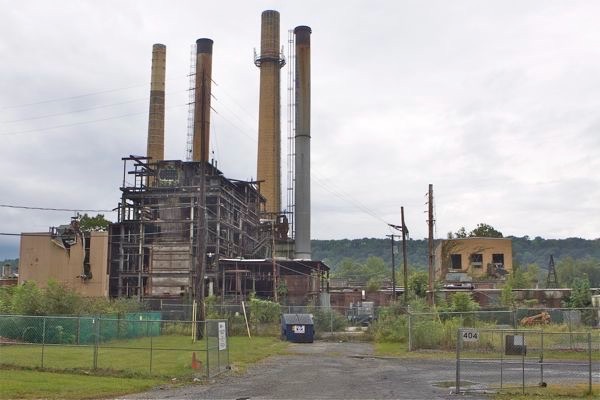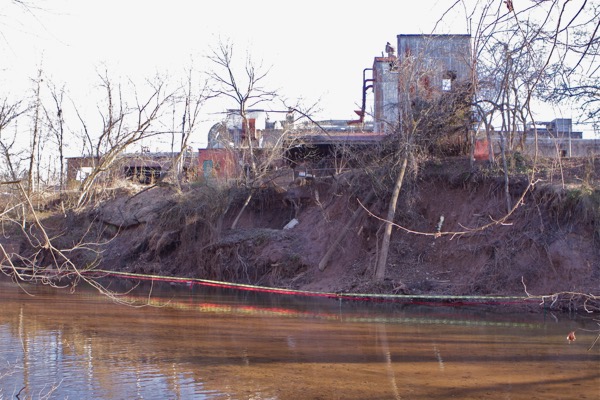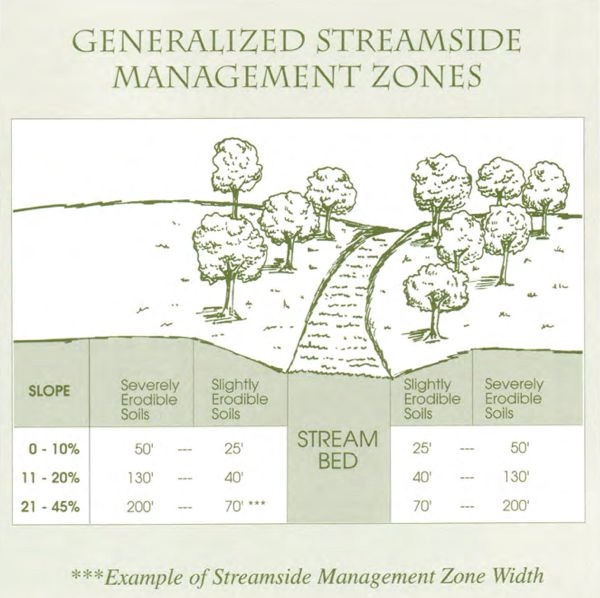NJ DEP Responds To Questions On PFAS Contamination At Delaware River Superfund Site
In a Vague and Evasive Email, DEP Says No Decisions On PFAS Cleanup Made Yet
Public Raised PFAS Concerns During Superfund Process That Were Ignored By EPA
I want to do a very quick followup on my prior post on the discovery of “forever chemicals” PFAS in groundwater at the Curtis Specialty Papers Superfund site along the Delaware River and NJ DEP’s issuance of a “CEA” that effectively suspends cleanup requirements. [see basic PFAS information from US EPA]
Frankly, I was surprised by this and asked EPA to respond to some important questions on how that all occurred.
The EPA Community Advisory Group (CAG) coordinator referred my initial questions to NJ DEP for response.
DEP responded via email yesterday, but in a way that didn’t answer some of my questions and raises more questions than it answers. DEP wrote: (emphases mine)
Hello Bill,
EPA asked me to respond to your email since the PFAS CEA was established by DEP.
Classification Exception Areas are established when ground water exceeds the applicable standards. PFAS was detected above NJ standards at the Curtis site, therefore a CEA and well restriction area were established. No decisions have been made regarding any remedial action requirements to address PFAS; the establishment of a CEA and WRA occur when contamination exceeding standards has been identified.
A full investigation of surface water and whether PFAS from the Curtis site has been discharged to the Delaware River has not yet been conducted.
Who detected the PFAS? When was it detected? At what levels? How do those levels compare to NJ DEP standards?
I fired off this email, seeking clarification and additional information:
Hi Gwen – thanks for your reply. Pat, please distribute this exchange to the full CAG, they deserve to understand what’s going on.
I have eight clarifying followup questions:
1. I understand the regulatory and scientific bases of a CEA, so I was confused by your statement that:
“No decisions have been made regarding any remedial action requirements to address PFAS;”
Under NJ DEP GWQS (NJAC 7:9C-1.6), the CEA effectively waives compliance with GWQS, and thus waives any DEP “remedial action requirements”.
The CEA also “suspends” (i.e. waives) the GWQS designated uses (e.g. potable water supply, ecological use support, etc), per the definition of CEA:
“Classification exception area” means an area within which one or more constituent standards and designated uses are suspended in accordance with N.J.A.C. 7:9C-1.6
Given that the CEA suspends the [chemical] constituent standards and designated uses, how can the Department impose remedial action requirements? There are no violations to remediate.
It was my understanding that there were no remedial action requirements at sites where CEA’s were issued (unless the technical conditions upon which the CEA was established were violated).
Please correct me if I am wrong and cite the basis for your correction and provide a case illustration where DEP has imposed remedial action requirements where a CEA was issued.
2. Was the CEA issued with a public notice and public comment period?
3. Whose final decision is it to impose remedial action requirements at a Superfund site?
My understanding is that it is EPA’s final decision, and that EPA could accept the NJ DEP CEA (no remedial action) as a State ARAR.
Please correct me if I misunderstand.
4. Has EPA agreed to accept the DEP CEA as a State ARAR?
If not, when will and how will this decision be made?
5. When you write that:
“No decisions have been made regarding any remedial action requirements to address PFAS;”
Whose remedial action decisions are you referring to (EPA or DEP)?
6. When you write:
“A full investigation of surface water and whether PFAS from the Curtis site has been discharged to the Delaware River has not yet been conducted.”
What future investigation are you referring to? Who would conduct this investigation? Who would oversee this investigation?
Who would make the decision regarding whether to require this investigation, EPA or DEP?
7. When you use the term “surface water investigation”, would that include sediments and biota?
Would that include assessment of ecological damage and Natural Resource injuries?
My understanding is that neither the US FWS nor the DEP have conducted an NRD assessment at this site, despite known discharges of regulated hazardous substances (from runoff and groundwater) to the Delaware River. Please correct me if I am wrong.
8. One final point and question for EPA:
Will EPA modify and re-open the ROD for public comment?
The public raised concerns about the presence of PFAS during public comment on the ROD, see: (Brian Weeks – in Appendix 5C)):
“Did EPA find any perfluorooctanoic acid (PFOA) or related chemical on the site? As you know, PFOA has been used as coatings on food contact paper, and it is a persistent pollutant with long-lasting environmental and human health concerns. The EPA documents for this site do not state whether PFOA was used in any operations on the site. Ifthey were, I suggest sampling and developing a remediation plan to ensure that this harmful chemical does not remain on the site.”
Here’s how EPA responded to that question: (emphases mine)
“Perfluorooctanoic Acid
Comment #2: A commenter asked whether site operations included use of perfluorooctanoic acid (PFOA) or related chemicals as coatings on food contact paper and, if so, whether they were detected at the site.
EPA Response to Comment #2 : EPA is not aware of any site records that indicate PFOA was used at the site.There are records that certain products used on site contained fluoroaliphatic compounds (fluorochemical copolymers Scotchban FC-807 and Scotchban FC-845), which could be considered chemicals in the same family as PFOA. Scotchban FC-807 is a former 3M product that contained Ammonium di-2-(ethyl-heptadecafluorosulfonamido)ethylphosphate. Scotchban FC-845 is a former 3M product that contained an emulsion copolymer of a fluoro acrylate, 2-ethoxyethyl acrylate, diethylaminoethyl methacrylate methyl chloride salt, glycidyl methacrylate, and octyl mercaptan using as emulsifier an ethoxylated amine salt. As these products were applied as coatings, the likely location for the use of the Scotchban products was the CFA. Soils from the CFA were excavated and disposed off-site during site activities, minimizing the potential for these compounds to continue to be present.”
I look forward to your timely response and please provide links to relevant documents.
Bill Wolfe



















